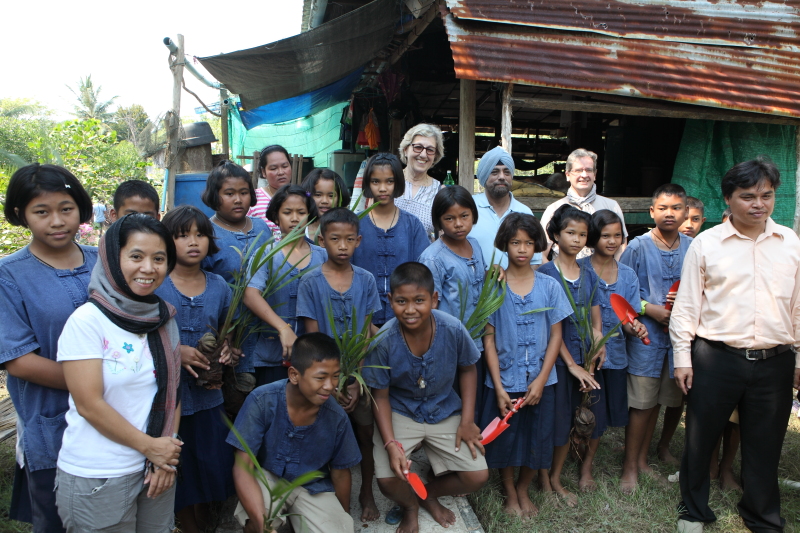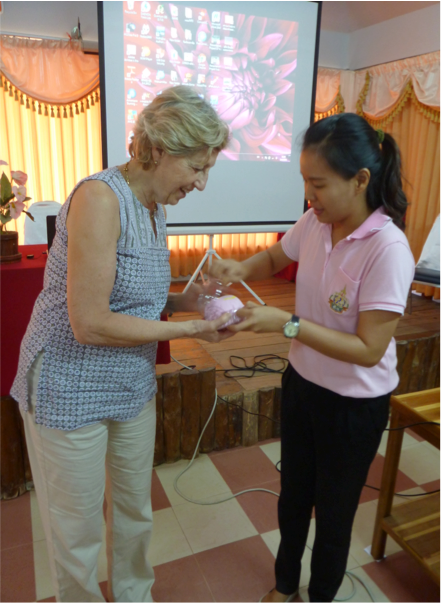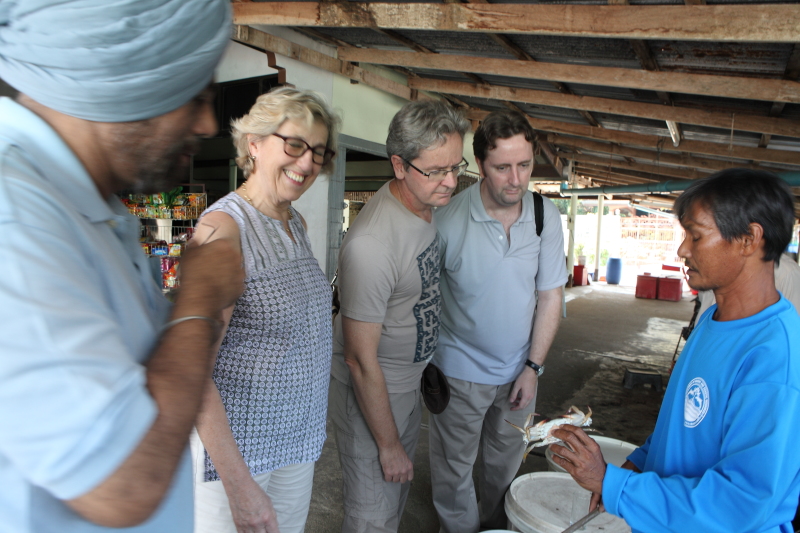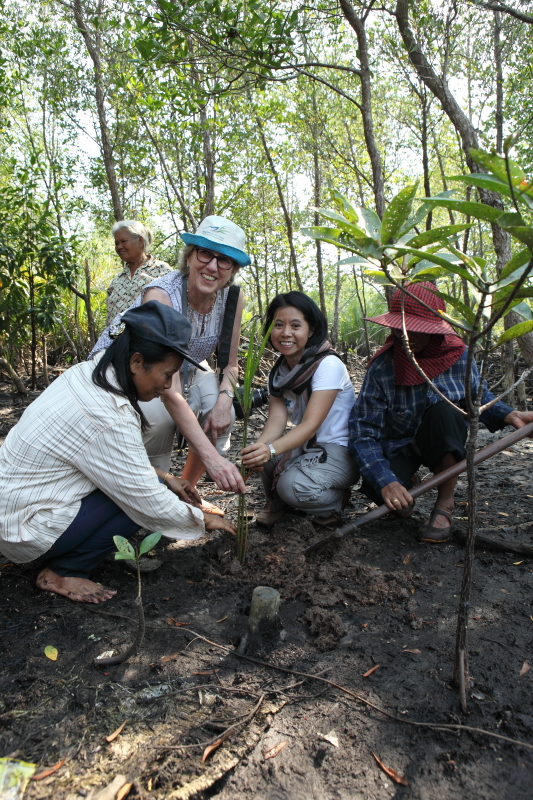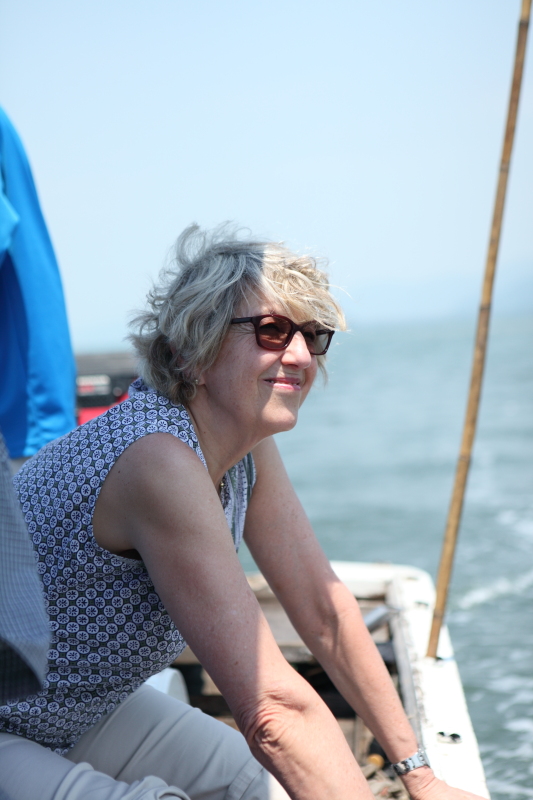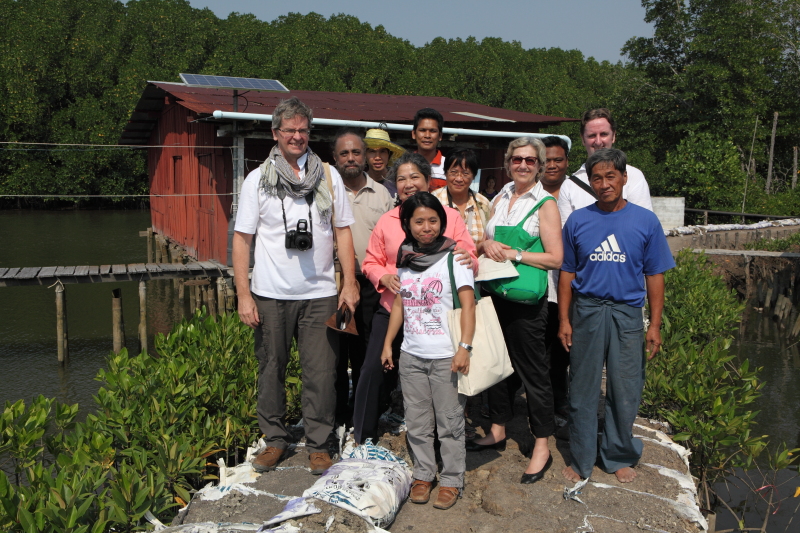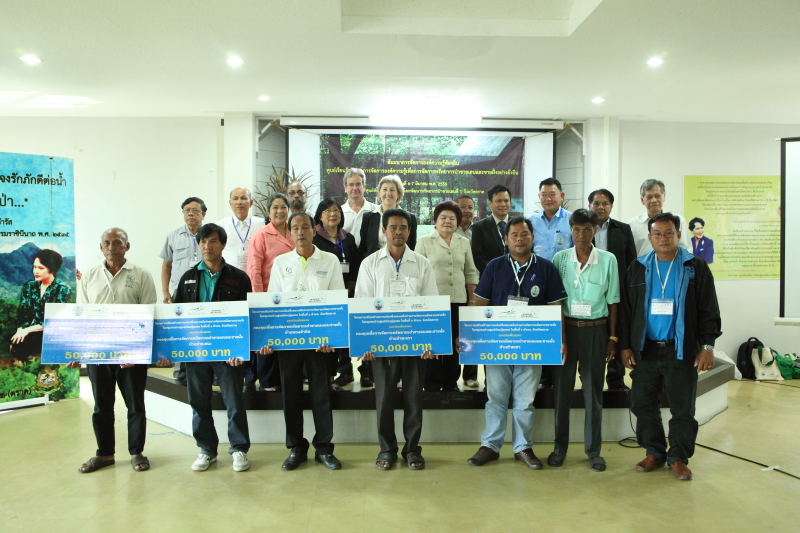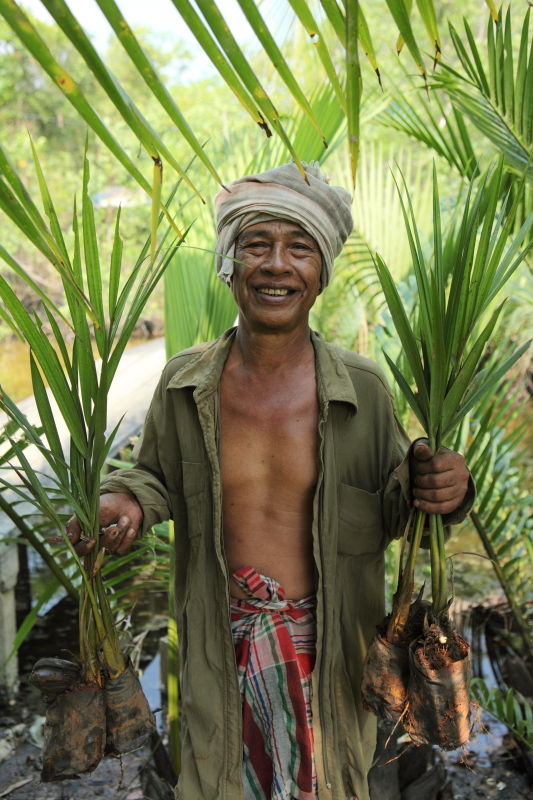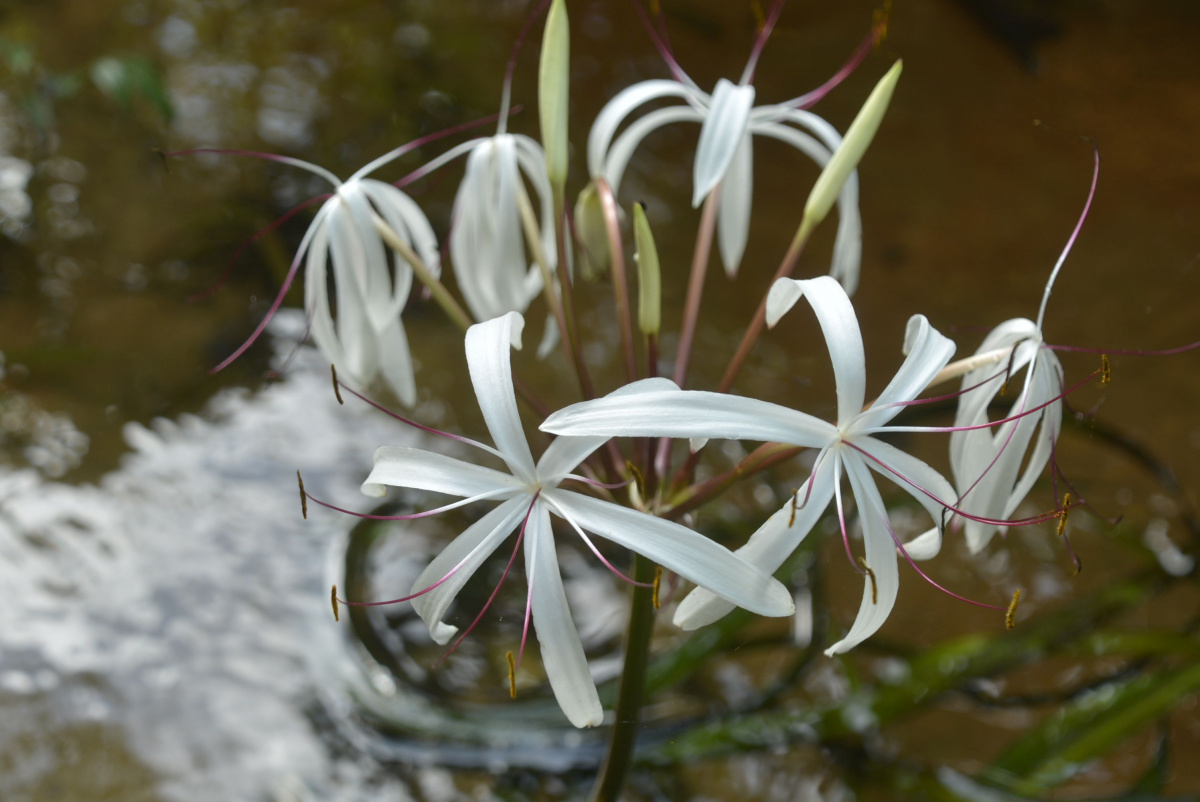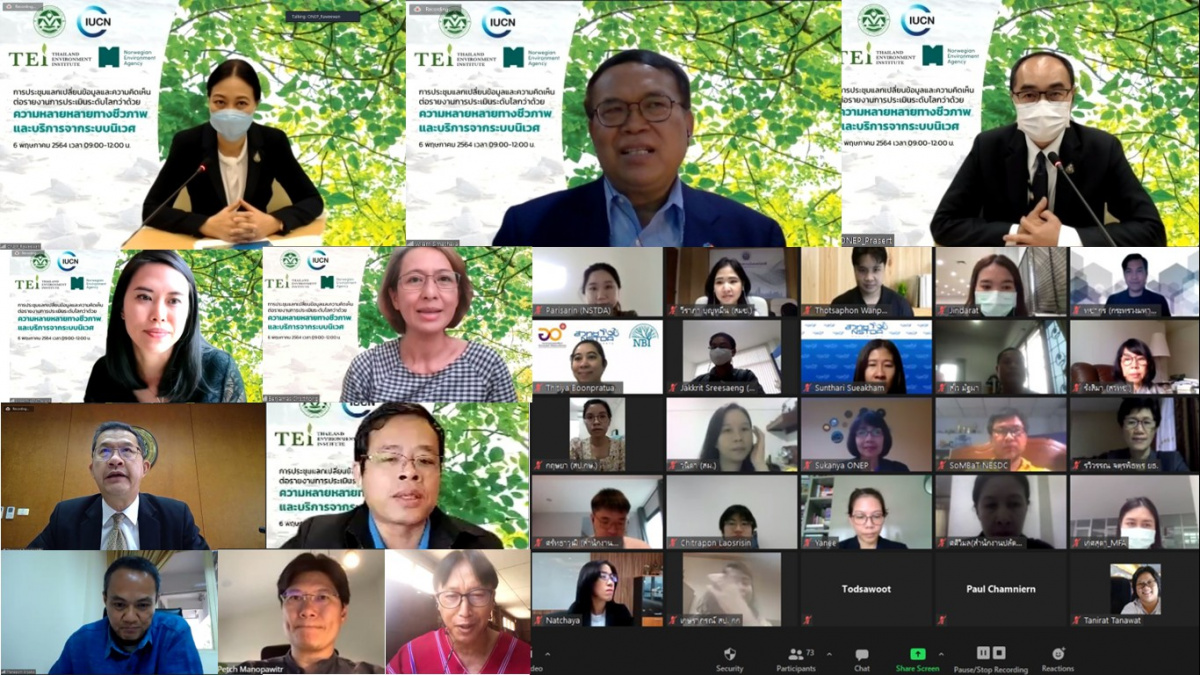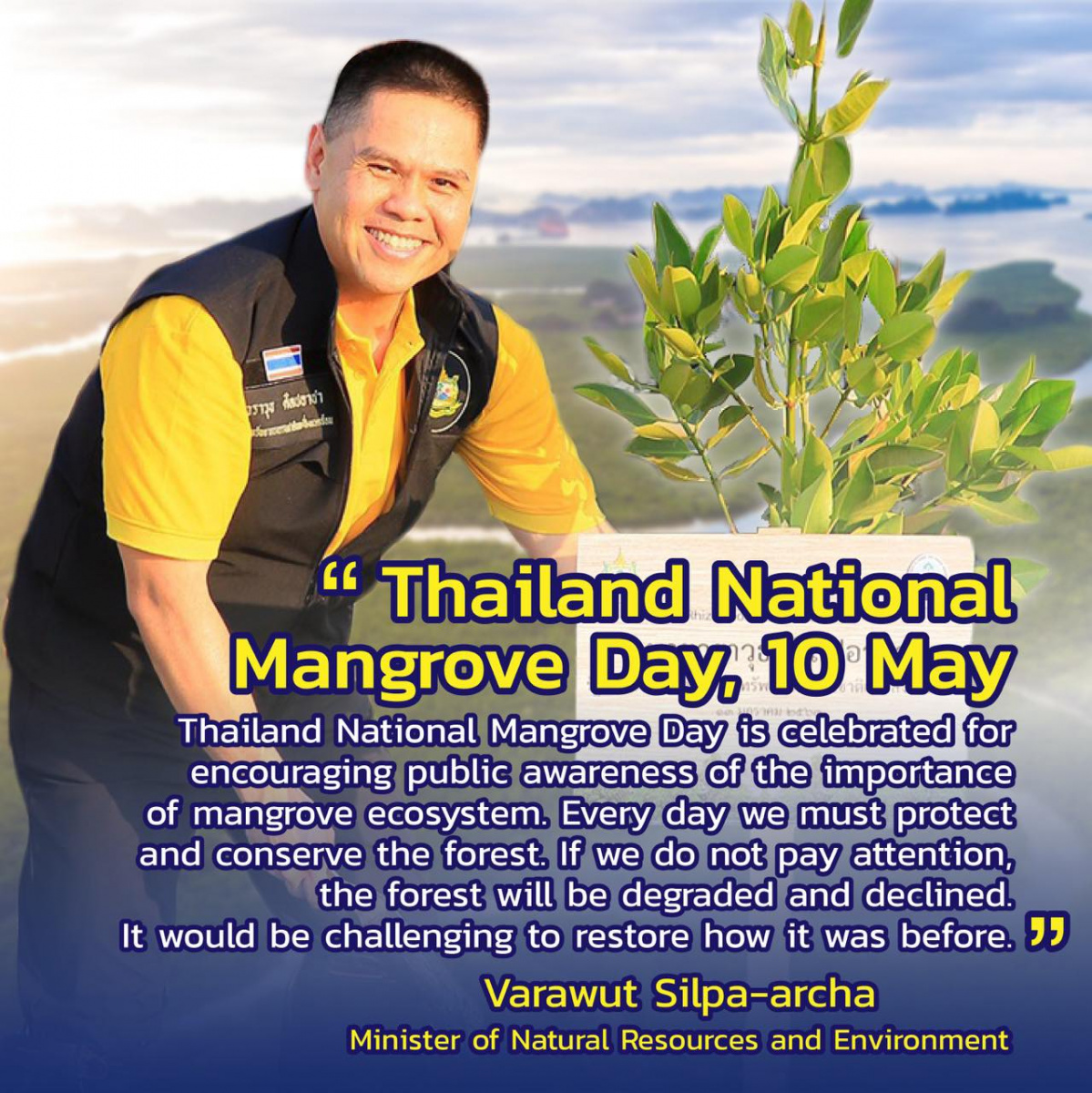Mai Root and Bang Chan Villagers Welcome IUCN Director General
From 5-6 March 2013, the Director General of the International Union for Conservation of Nature (IUCN), Julia Marton-Lefèvre, came to visit Sustainable Development Foundation (SDF) and IUCN’s joint project field sites, where coastal communities are responding to both climate and human induced change.
As soon as the IUCN delegates arrived, they were welcomed with big smiles. The tour started with the Mai Root villagers proudly showing their visitors around their community crab banks.
“We as a community operate the crab bank, and monitor indicators, outcomes, and the overall process,” says Phonpat Sreesangkajorn.
Phonpat scoops a cup of water from the crab bank, the water filled with hundreds of thousands of minute crabs swimming around. The banks host pregnant crabs until their eggs are released, which are then distributed into the ocean or inland waterways, with the IUCN team being able to get on a boat and release the eggs themselves during their visit. The community has seen improvements in crab populations and is now experimenting with silver mantis shrimp aquaculture. But the crab bank initiative has encountered some problems, with some villagers taking advantage of the population increase, where young crabs can be found in huge numbers.
“However, we found that many of those participating in the nearshore fishing are older villagers, maybe in their sixties or seventies, who might not have the resources and strength to be able to head out to sea,” explains Jonathan Shott, Project Manager and Disaster Management Consultant with SDF.
“[Through these crab banks] the community can plan and set strategies for ourselves,” proclaims Surasak Intaraprasert, a prominent village leader who once was the sub-district headman.
After visiting the field, the guests joined the villagers in a learning forum about village led approaches and adaptation strategies. At the forum, villagers shared about their livelihood diversification strategy and how this helps to build resilience to future change. Intaraprasert strongly supports the strategies like the crab bank. “It is a great example of adaptation because it is responding to economic, social, and environmental changes all at the same time. We work to ensure sustainability through youth interaction in our plans and programs.”
Planting for the future
After the forum the IUCN guests were invited to another village in Mai Root to plant nipa palms in the mangrove forest area with local primary school students. Joined by local leaders and the head of the local mangrove development station, Mr. Winai Boonlom, the guests planted for the future. Many of the IUCN staff were ecstatic to see the community and youths participating in the care of their environment. Mangroves continue to be depleted all over Thailand. Where mangroves used to cover 368,000 ha in 1961, has dropped to 240,000 ha by 20041and continues to be at risk. Many efforts are now being made all along the Thai coast with communities protecting, rehabilitating, and planting mangroves. Including local classrooms, where the participating youths came from, joined and encouraged by their young science teacher.
The next stop for the tour was to visit another crab bank in a second village, which is located in a very accessible space and doubles up as a community center.
The following day, SDF joined IUCN in a forum held by The Center for People and Forests (RECOFTC) and Mangroves for the Future (MFF), with multiple partners, such as SDF.
Various local NGOs, civil society organizations, village groups and academic institutions attended the forum. Director General Marton-Lefèvre went over the mission of MFF and emphasized the importance of sharing knowledge.
“Knowledge sharing will empower communities. And enhancing governance is important because we cannot talk about the environment without looking at how people treat and preserve the environment.” says Director General Julia Marton-Lefèvre.
Mangroves for the Future, a partnership-based initiative, also help to exchange knowledge from different mangrove countries, empower local communities, and enhance governance to better care for the environment and people.
The final stop for the tour was Bang Chan Sub-District, in Chanthaburi Province. Considered to be located illegally in mangrove forests, the communities here can also come into conflict with government officials because of their use of a type of fishing gear called stationary set bag nets, which are also considered illegal under Thai law. One of the communities here is conducting a 2-year research project to come up with comprehensive empirical data to improve fishery management in the sub-disitict, and hopefully improve the sustainability of local livelihoods at the same time.
There are around 1,200 stationary set bag nets in the sub-district, and the villagers along with researchers will examine the catches of 10% of these fishing gears. The community shared their plan of action to the IUCN delegates.
Patiwat Kanchanawong, an independent researcher, said he was glad to have the IUCN Director General visit.
“She is a big name from a global organization. She has come to this small village and showed her support for community self-management towards sustainable living. We are honored", says Kanchanawong.
SDF and the communities we work with would like to thank IUCN and the Director General for their visit. We end with a tweet posted by Marton-Lefèvr, “Visit to EU funded coastal resilience joint @IUCN and @SDFThai project in Trat Province Thailand with visible results for people & nature.”
By Lean Bayle Deleon, SDF Communications Officer
1 http://projects.wri.org/adaptation-database/thailand-mangrove-reforestation-and-protection
